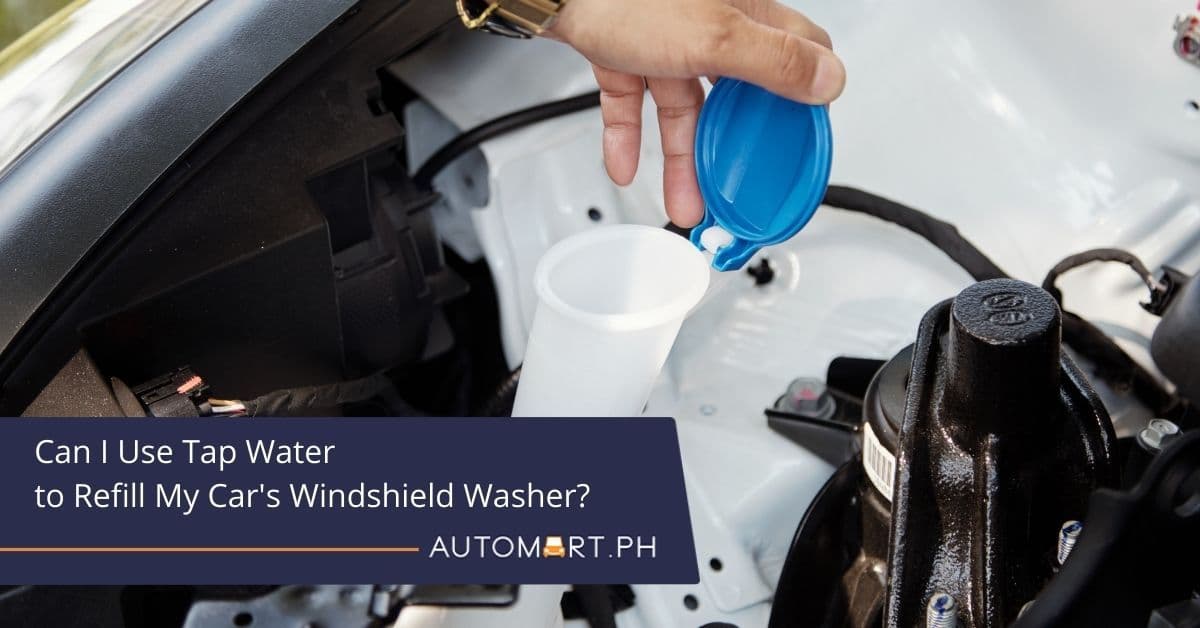
Can I Use Tap Water to Refill My Car’s Windshield Washer?
Updated on December 18 2025
The windshield washer and wipers work together to enhance all-weather visibility while keeping your car’s windshield clean. Most car owners in the Philippines use tap water when filling the windshield washer reservoir. However, there are risks to consider if you insist on using tap water for the windshield washer.

For starters, plain water does not have the cleaning power necessary to eliminate road grime, mud, and dead insects from the windshield. In addition, water will freeze when exposed to frigid temperatures, and tap water contains hard minerals that can clog up the pump and spray nozzles. True, we don’t need to think about freezing anything in Philippine tropical weather, but it’s the reason why washer fluid is a better idea for drivers who live in snowy regions.
Tap Water vs. Windshield Washer Fluid
Using tap water has its downsides, but so does windshield washer fluid. First, washer fluids cost more than plain water. Next, most washer fluids contain methanol, a toxic compound that is hazardous to the environment. Furthermore, methanol can degrade metals and plastics with repeated exposure, and washer fluid contains solvents and other chemicals that could damage the paint.

It’s not all bad news. Methanol is an anti-freeze agent and prevents the fluid from hardening inside the reservoir and tubing. Additionally, washer fluid contains unique ingredients to keep the pump lubricated and working smoothly. Also, washer fluid does not have hard minerals that could clog up the system.
Is distilled water a better option?
Yes! Distilled water is “softer” than tap water and does not contain hard minerals like salt and other organic materials. What’s more, distilled water is more affordable than washer fluid. And while distilled water will prevent clogging up the hoses and nozzles in your car’s windshield washer, it still doesn’t have the cleaning power to quickly remove dirt, gunk, and insects from the windshield.

All hope is not lost. You can make a homemade windshield washer fluid using common household materials, and you can do it without exposing your car’s paint, chrome, or plastic parts to accelerated wear and tear.
How to Make Washer Fluid Using Glass Cleaner
Mixing distilled water with glass cleaner is a safer option than using expensive and hazardous washer fluids. All you need is a gallon of distilled water mixed with a cup of glass cleaner. Mix it well and pour the concoction directly into the windshield washer reservoir. Make sure to use an ammonia-free glass cleaner to prevent streaking. This homemade washer fluid is best for year-round tropical weather.
How to Make Washer Fluid Using White Vinegar
Sure, not everyone likes the smell of vinegar, but it’s a proven ingredient that eliminates and dissolves water spots from glass surfaces. Add four cups of white vinegar to a gallon of distilled water and mix well. Pour the solution into the windshield washer reservoir, and that’s it.
How do I refill the windshield washer reservoir?
Here are the easy steps on how to refill the windshield washer reservoir.

Step 1: Park the vehicle, engage the handbrake, and pop open the hood.
Step 2: Locate the washer reservoir in the engine bay. It has a white, blue, or black cap with a windshield symbol.
Step 3: Open the cap to fill the reservoir. You might need to use a funnel for this step. Do not overfill.
Step 4: Replace the cap after filling it up with washer fluid.
Step 5: Close the hood.
Conclusion
Washer fluid is better than tap water for the windshield washer in your vehicle. However, washer fluid is generally expensive, harmful to animals and the environment, and could harm your car’s finish. Try using a homemade washer fluid using glass cleaner or vinegar the next time you fill up the windshield washer reservoir.